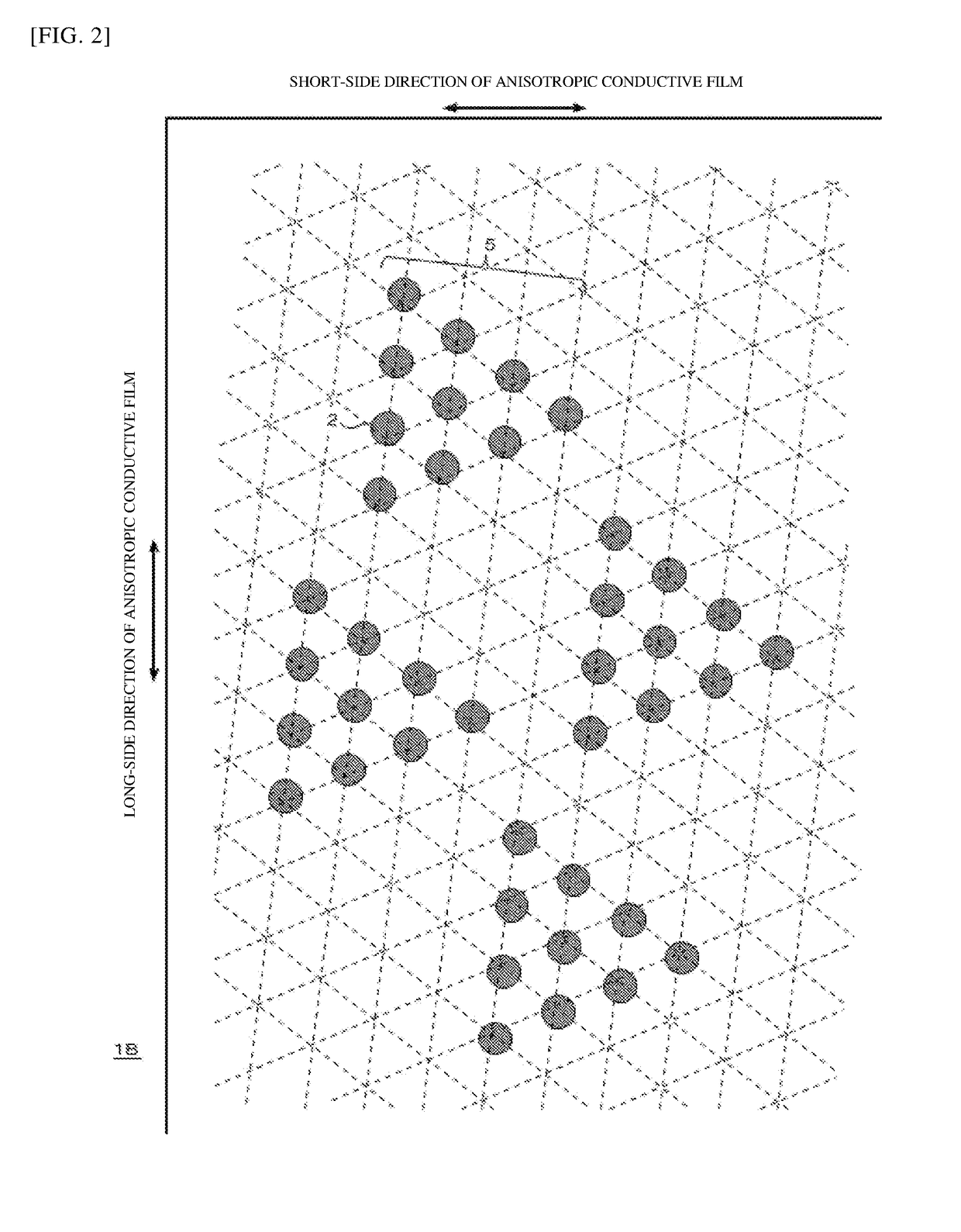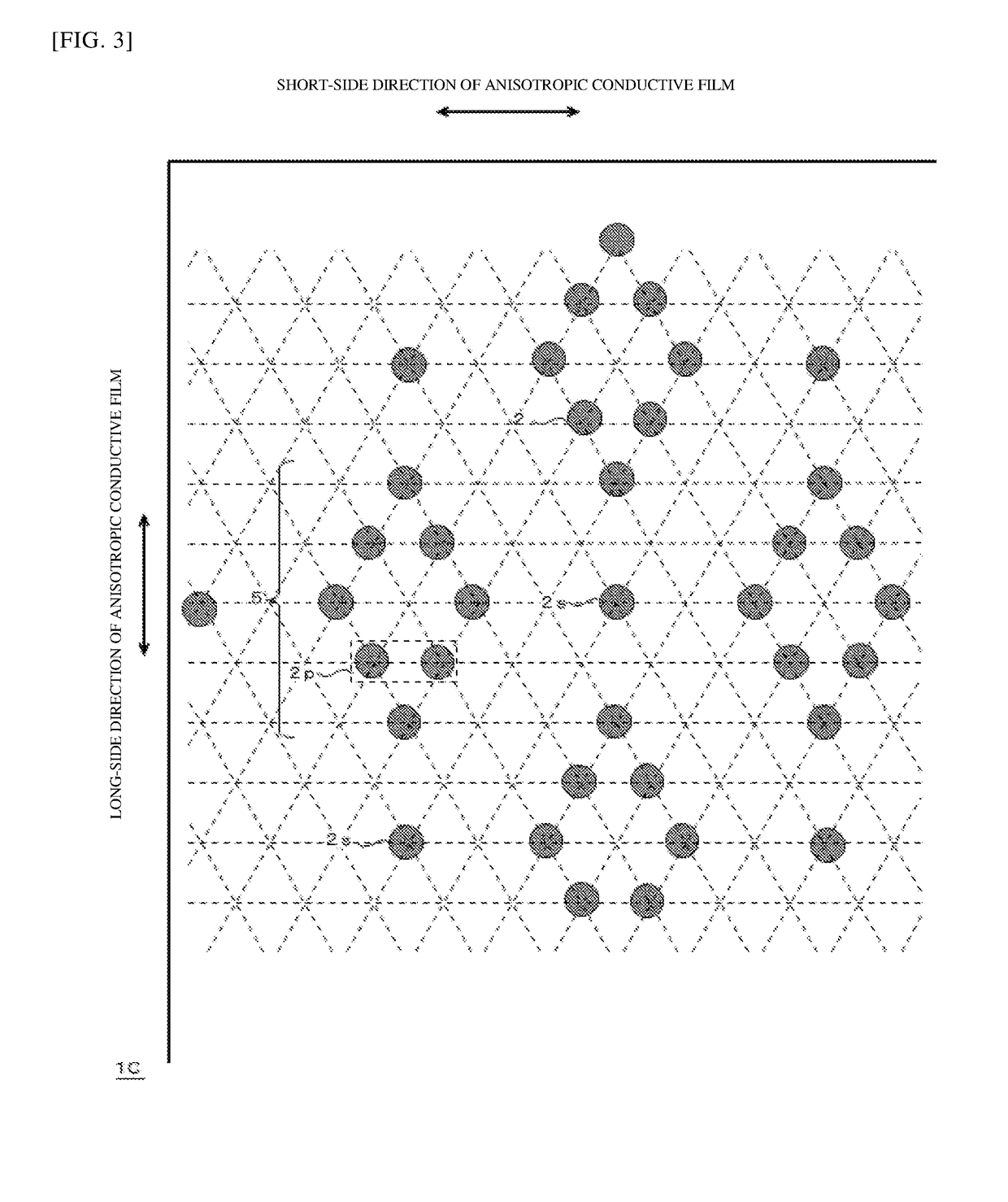Anisotropic conductive film
- Summary
- Abstract
- Description
- Claims
- Application Information
AI Technical Summary
Benefits of technology
Problems solved by technology
Method used
Image
Examples
experimental examples 1 to 8
Production of Anisotropic Conductive Film
[0113]For the anisotropic conductive films to be used in COG connection, the effects of the resin composition of the insulating resin binder and the disposition of the conductive particles on the film forming capacity and conduction properties were investigated as follows.
[0114]First, resin compositions forming insulating resin binders and insulating adhesive layers were respectively prepared with the formulas shown in Table 1. In this case, the minimum melt viscosity of the resin composition was adjusted by the preparation conditions of the insulating resin composition. The resin composition forming the insulating resin binder was applied to a PET film with a film thickness of 50 μm using a bar coater, and this was dried for 5 minutes in an oven at 80° C. to form an insulating resin binder layer with the thickness La shown in Table 2 on the PET film. Similarly, an insulating adhesive layer was formed on the PET film with the thickness shown ...
experimental examples 9 to 16
Production of Anisotropic Conductive Film
[0146]For the anisotropic conductive films to be used in FOG connection, the effects of the resin composition of the insulating resin binder and the disposition of the conductive particles on the film forming capacity and conduction properties were investigated as follows.
[0147]Specifically, resin compositions for forming insulating resin binders and insulating adhesive layers were prepared with the formulas shown in Table 3, and anisotropic conductive films were produced in the same manner as in Experimental Example 1 using these resin compositions. The disposition of the conductive particles and the center distance of the closest particles are shown in Table 4. In Experimental Example 16, the disposition of the conductive particles was a hexagonal lattice arrangement (number density: 15000 particles / mm2), and one lattice axis thereof was inclined by 15° with respect to the long-side direction of the anisotropic conductive film.
[0148]In the ...
PUM
| Property | Measurement | Unit |
|---|---|---|
| Lattice constant | aaaaa | aaaaa |
| Density | aaaaa | aaaaa |
| Electrical conductor | aaaaa | aaaaa |
Abstract
Description
Claims
Application Information
 Login to View More
Login to View More - R&D
- Intellectual Property
- Life Sciences
- Materials
- Tech Scout
- Unparalleled Data Quality
- Higher Quality Content
- 60% Fewer Hallucinations
Browse by: Latest US Patents, China's latest patents, Technical Efficacy Thesaurus, Application Domain, Technology Topic, Popular Technical Reports.
© 2025 PatSnap. All rights reserved.Legal|Privacy policy|Modern Slavery Act Transparency Statement|Sitemap|About US| Contact US: help@patsnap.com



